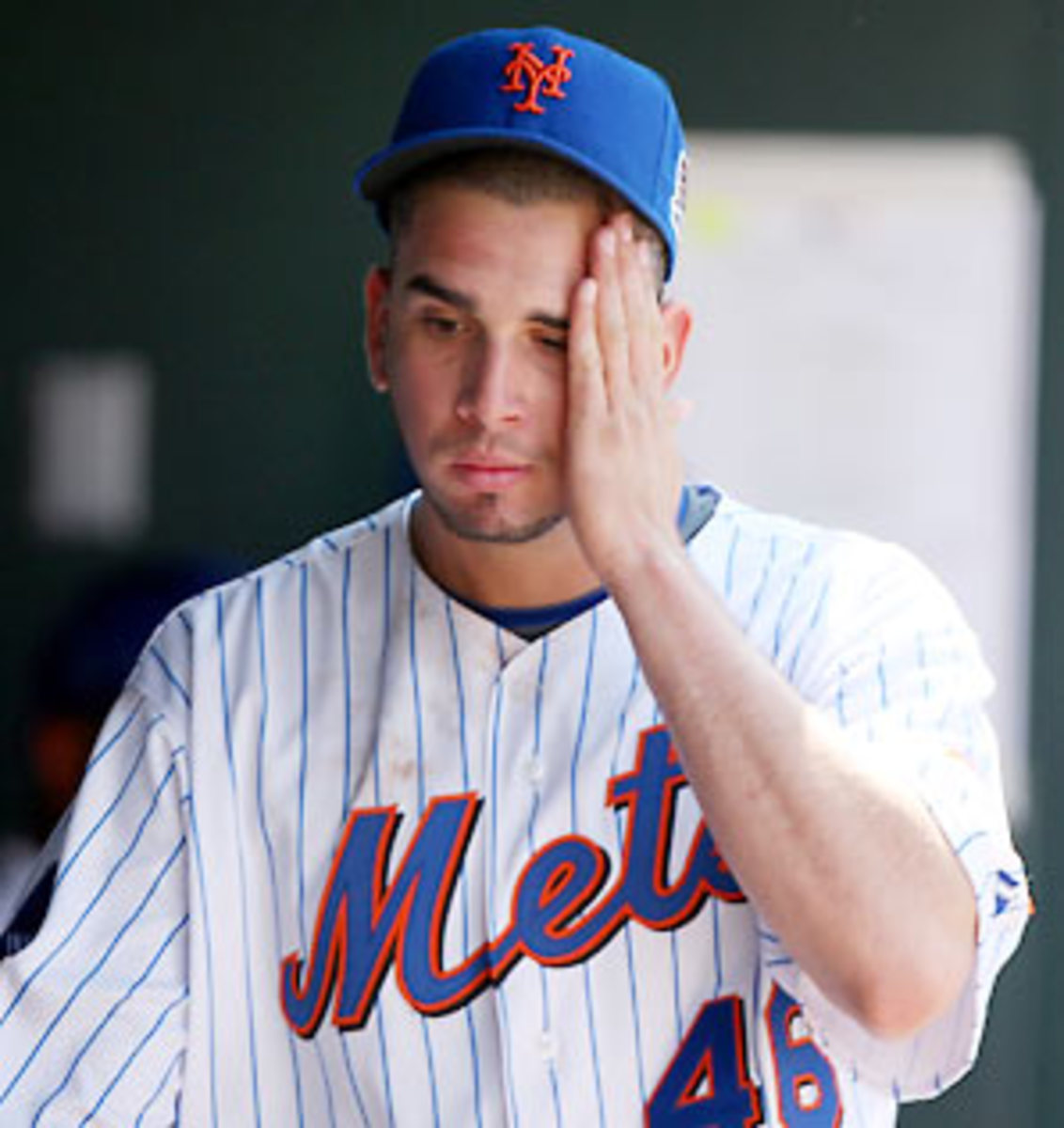
Mets' staff is struggling, but they have nowhere to turn for help
It was shaping up to be a glorious weekend of baseball for the Mets. Temperatures soared, and the Mets welcomed an opponent -- the lowly Nationals -- that was even more appetizing than anything purveyed at the Shake Shack in Citi Field. This was supposed to be the weekend in which the Mets, who entered as the losers of four straight games, would finally kick their 2009 season into gear.
It certainly looked as if it would be just that through Saturday, after a typically brilliant performance from Johan Santana and an encouragingly effective one from Mike Pelfrey had earned Mets wins in the series' first two games. Then came Sunday, and with it another disastrous outing from Oliver Perez (seven earned runs in 4.1 innings), whom GM Omar Minaya re-signed to a three-year, $36 million free-agent deal only two-and-a-half months ago.
As the blazing sun set over New York on Sunday night, and as the first-place Marlins headed north for a three-game set that was to begin on Monday, the 8-10 Mets could only look at the weekend as they might an episode of Lost: it was tantalizing, but it raised more questions than it answered.
"I'm really concerned about him at this point," manager Jerry Manuel said of the struggling Perez, whose ERA now stands at 9.31. "I don't know what it is with Ollie. I'm going to sit down and talk with him and try to figure it out."
The southpaw doesn't seem to know, either: "It's not there. I have to just keep working and get better."
This much is clear: He's not nearly the pitcher he was two years ago, when he went 15-10 with a 3.56 ERA, or even in '08 (10-7, 4.22). According to fangraphs.com, entering Sunday he was throwing his fastball two miles per hour slower (89.3 mph) than usual, and his changeup more than four mph faster (84.8). A 4.5 mph difference between those pitches is negligible indeed (by way of comparison, Santana throws his changeup nearly 11 mph slower than his heater), and means that hitters don't have to guess which pitch is coming, and can handle both with ease. They've been doing just that, as Perez has allowed 23 hits in his 19.1 innings. Add that to Perez's usual control problems -- he led the NL in bases on balls last season, and has already issued 15 in '09 -- and what you get is a pitcher who might be off to the worst start of any in the National League thus far, at least as compared to what was expected of him. Cause for concern, indeed.
Of course, the Mets' rotational woes only begin with Perez. They possess exactly one reliable starter: Santana, who looks more untouchable than ever. Only Santana currently has an ERA lower than Pelfrey's 6.32; only Santana currently has more than a single quality start to his credit. John Maine's ERA has risen in each of his four years in New York -- he's at 7.47 in '09 -- and Livan Hernandez (1-1, 7.31), he of the rubber arm and rubber belly, has been no better, and certainly isn't an answer even in the short term.
The problem for the Mets is that unlike some of baseball's other superpowers -- the Yankees and Red Sox, in particular -- they don't have a stable of backup arms to turn to when things go poorly. Tim Redding? The former Nat threw four scoreless innings on Saturday in extended spring training, where he's rehabbing a shoulder injury, but he's no savior. Jon Niese? The prospect allowed 11 runs in 14 big-league innings last year, and this season he's 0-2 with an 8.44 ERA in four Triple-A starts. Pedro Martinez? Sure, maybe.
Minaya felt certain over the winter that the only thing standing between his Mets and the playoffs was a reinforced bullpen. And this bullpen, behind new additions Francisco Rodriguez and J.J. Putz, has been generally stellar. But that 'pen will be relegated to nothing more than mop-up duty -- at least whenever Santana isn't on the mound -- unless the club's 2-5 starters quickly turn things around or Minaya and his minions come up with effective options to slot behind their ace, and soon.
Otherwise, the only thing the Mets will be doing this October is wondering how a team with the game's second-highest payroll managed to finish below .500.





